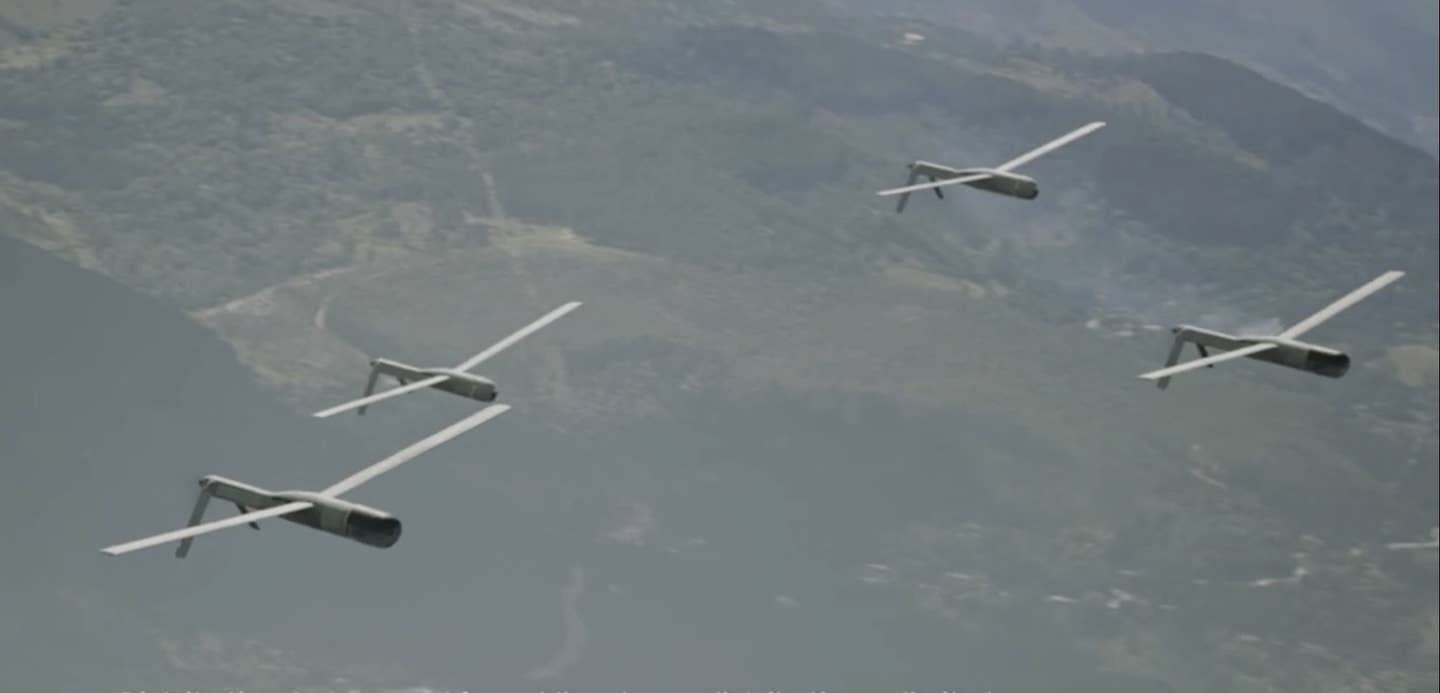Army Drone Test Evolves from ‘Bee Swarms’ to ‘Wolf Packs’
The “wolf pack” drone swarm technique deployed during the test simulated a stimulate, hunt, kill, and assess tactic.

The move to the “wolf pack” swarms represents an evolution of a previous experiment using a “bee swarm” approach of launching a mass of drones with a collective task. [Courtesy: U.S. Army]
A recent U.S. Army drone swarming experiment conducted in the Great Salt Lake Desert organized drones into four "wolf packs," each with a distinctive mission in what was the largest swarm test ever conducted by the service.
The drone experiment took place at Dugway Proving Ground near Salt Lake City, Utah, as part of the U.S. Army’s 2022 Experimental Demonstration Gateway Exercise (EDGE22), an annual convening of Future Vertical Lift Cross-Functional Team and nearly 20 units and organizations from across the U.S. Army, industry partners, and international Allies come together to assess new tactics, technologies and interconnecting architectures.
This is the second year the Army has held the nearly three-week aviation-focused event testing the Army’s future vertical lift modernization effort.
The move to the "wolf pack" swarms represents an evolution of a previous experiment using a "bee swarm" approach of launching a mass of drones with a collective task, which last year led to bandwidth constraints and overwhelmed autonomous algorithms, Aviation Week reported.
The wolf packs deployed in this year's experiment consisted of four waves of seven drones each. The drones were equipped to conduct reconnaissance to detect, identify, locate and report back enemy positions.
"The swarm simulated a stimulate, hunt, kill and assess tactic," Future Vertical Lift Cross-Functional Team spokesperson Lisa Ferguson told FLYING.
"Bee swarms are simply large numbers of drones meant to overwhelm and confuse an enemy system," Ferguson said. "The wolf pack technique launches in waves with members executing different behaviors like to detect and identify enemy systems, locate them to report back to the commanders in the field, remove the enemy system from the equation, and then assess the battlefield to ensure the mission was completed."
Among the demonstrations the Army planned during the event was a swarm using the Air Launched Effects (ALE) unmanned aircraft systems, which is a family of networked combat drone systems capable of delivering payloads autonomously or semi-autonomously. Drones used in the exercise include Area-I’s Air-Launched, Tube-Integrated, Unmanned System 600, known as ALTIUS 600, and Raytheon’s Coyote. Both systems are tube-launched from aircraft or ground and capable of surveillance, electronic warfare and strike missions.
“ALEs extend reach in the lower tier air domain providing critical capabilities needed to achieve overmatch against near-peer adversaries in a multi-domain environment,” Ferguson said late last month.
Lessons learned during the demonstration in Utah will help advance ALE swarming behavior in future experiments.
A team of 45 test evaluators who participated in the test are now compiling data and analyzing the tests and demonstrations, with results expected later this summer, Ferguson added.

Sign-up for newsletters & special offers!
Get the latest FLYING stories & special offers delivered directly to your inbox






